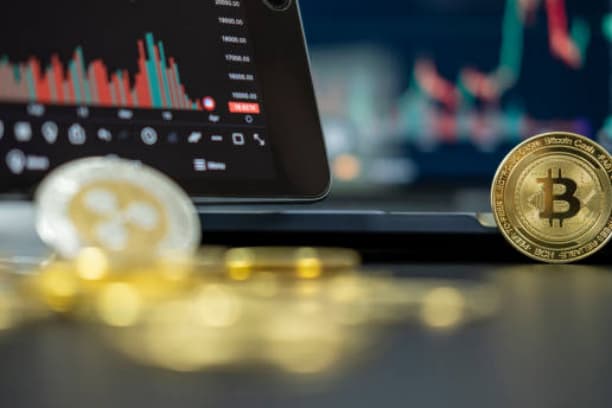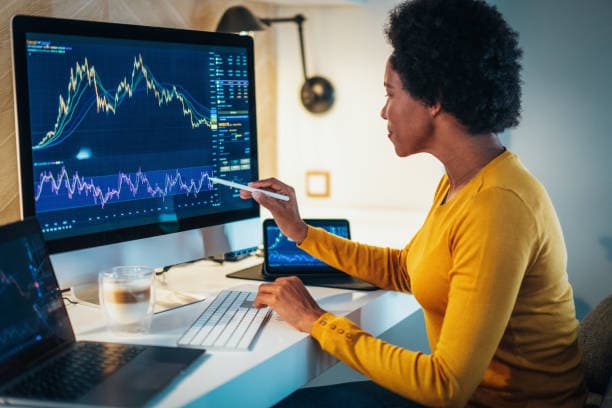Bitcoin futures trading, as an important investment tool in the cryptocurrency market, may seem a bit complicated to newcomers. In this article, we will introduce the basic concepts of Bitcoin futures, how to open a trading account, choose a suitable trading platform, and explain in detail how to start Bitcoin futures trading for beginners. We will analyze the operation process and risk management techniques of Bitcoin futures trading step by step, so that you can enter this market more easily.

What is Bitcoin Futures Trading?
Bitcoin futures trading involves investors buying and selling Bitcoin contracts in the futures market rather than trading physical Bitcoins directly. Bitcoin futures contracts are derivatives that allow traders to buy or sell Bitcoins at a predetermined price at a future date. This means that even if you don't own Bitcoins, you can still make money from price fluctuations. The futures market works similarly to traditional commodity futures trading, except that it is based on a digital asset called Bitcoin. For newcomers, understanding the basic concepts of Bitcoin futures is the first step in entering the market.
How do I choose a trading platform?
Choosing the right Bitcoin futures trading platform is an important step for every newbie. There are many cryptocurrency exchanges in the market that offer futures trading services, such as Binance, BitMEX, OKX, and so on. When choosing a platform, there are several key factors to consider: platform security, trading fees, variety of pairs, and user experience. In terms of security, make sure the platform has good capital insurance and risk control measures; transaction fees have a direct impact on investment returns, as lower fees can reduce transaction costs; and the diversity of trading pairs means more choices and more profit opportunities. For novice traders, it is recommended to choose an exchange with a friendly interface and easy operation.
Account opening and identity verification
Opening a Bitcoin Futures trading account is a simple process that usually requires some basic information and identity verification. Selecting and registering for an account with the trading platform of your choice usually involves setting up basic information such as an email address and password. Next, in order to comply with anti-money laundering regulations and enhance account security, the platform will require users to submit identity verification documents such as passports, driver's licenses, or other government-issued identification. Users may be asked to complete video authentication or facial recognition. After completing the identity verification, you will be able to trade Bitcoin futures.
Bitcoin Futures Basic Operation Procedure
Bitcoin futures trading operations are not complicated, and mainly include steps such as choosing a contract type, setting levers, selecting a trading direction, and executing an order. You need to know what different maturities and delivery contracts are available in the market. For example, some futures contracts may be quarterly or monthly, so choose the right contract according to your investment strategy. Next, choose your leverage: Leverage can magnify returns, but it can also increase risk. Beginners should choose a lower leverage to minimize the risk of market volatility. When executing an order, you can choose to go long (i.e., predicting a rise in the price of Bitcoin) or short (i.e., predicting a fall in the price of Bitcoin).
Understanding Leverage and Margin
Leverage and margin are very important concepts in Bitcoin futures trading. Leverage allows investors to leverage larger market trades with a small amount of capital. For example, with a 10x leverage, you only need to provide 10% of margin to open a trading position worth 10x. Thus, if the market moves in a favorable direction, your gains will be magnified, but if the market moves in an unfavorable direction, your losses will be magnified as well. Therefore, leverage must be used with caution. Beginners are advised to start with a low leverage and set up a stop loss to control the risk.

Risk Management Tips: How to Avoid Overtrading?
The Bitcoin futures market is highly volatile and risky, so effective risk management is a skill that every trader must master. Setting a Stop Loss is a basic strategy to protect your capital. A stop-loss is a system that automatically closes your position when the price hits a predetermined level to avoid further losses. Properly sized positions can also help control risk. Beginners should not invest too much money to avoid being hit hard by a single mistake. Finally, staying calm and following a trading plan to avoid emotional trading is the key to controlling risk.
How to interpret market trends and technical analysis?
When trading Bitcoin futures, technical analysis is an important tool for predicting market movements. Technical analysis helps traders predict future market direction by examining past price movements. Beginners can learn some basic technical indicators, such as moving averages (MA), relative strength index (RSI), Bollinger Bands (Bollinger Bands), and so on, these tools can help identify the market is too hot or too cold, K charts are also a very useful tool, which can be intuitively show the trend of the price movement. By learning and practicing these analytical tools, novice traders can improve the accuracy of their market predictions.
Practical Example: How to Successfully Trade Bitcoin Futures for Beginners?
In order to let newbies better understand the operation process of Bitcoin futures trading, the following is a real-life example to illustrate. Assuming that you have opened a Bitcoin futures account on a platform and completed the identity verification, you decide to trade with a low leverage. Assuming that the current price of Bitcoin is $30,000, you predict that the price of Bitcoin will rise, so you choose to go long and set a 2x leverage with a margin of $1,500. If the price rises to $32,000, you will make a profit of $1,000 on this trade. On the other hand, if the price goes down, you will need to set a Stop Loss to avoid excessive losses.
How to Avoid Common Mistakes in Bitcoin Futures Trading?
Bitcoin futures trading can be a challenge for new traders, here are some common mistakes and how to avoid them. Over-reliance on leverage is a common mistake made by novice traders. Using too high a leverage can magnify losses. It is advisable to start with a lower leverage and gradually increase your risk tolerance. Neglecting risk management can also get a trader into trouble. Learning how to set stop-loss and take-profit points and strictly adhering to them are important factors for successful trading. Finally, emotional trading is also a common problem for new traders. Stay calm, follow a plan and avoid making impulsive decisions due to momentary market fluctuations.
Summary: How to Start Bitcoin Futures Trading for Newbies?
Starting to trade Bitcoin futures may seem a bit complicated for newcomers, but by following the steps and practicing, you will be able to master the art of trading. Choose a reliable trading platform, open an account and complete identity verification. Next, learn the basics of trading, bar setting and risk management techniques, start trading small amounts and build up your trading experience. Most importantly, keep learning and improving your trading strategies in order to make long-term profits in the Bitcoin futures market.














